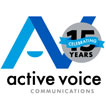
Donor profiles are a nice way for hospital foundations, universities, private schools and other nonprofits to acknowledge the people who support them with donations both big and small. They also are a great opportunity to entice others to give. When your audience relates to a donor, they’re more likely to make a donation of their own.
These stories can be told in a few different ways. You can pair them with professional photography for your foundation’s print magazine or annual report. You can tell them via video that gets posted on social media or emailed to your contact list. Or you can post the written piece to your organization’s blog with some casual photos that your donor supplies. Whatever you decide, here’s how to write a donor profile.
1. Gather intel from the gift officer.
Sit down with the gift officer or development manager who worked most closely with the donor to secure their gift. You’ll want to get as much information as possible from this person so you have enough background to prepare your interview questions for the donor and so you can keep your conversation with the donor as brief as possible. Be sure to find out the amount of the gift, the structure of the donation, the program or service line the gift will support and any details worth noting about the donor, such as why the donor decided to make the donation in the first place or their connection to your organization.
2. Interview the donor.
Your interview with the donor will make up 90% (or more) of your source material for the story, so be sure not to skimp on preparations. Draft questions in advance and share them with the donor ahead of time if requested. You’ll want to ask questions like:
- Why was it important to you to support our organization/program?
- What impact do you hope your gift will have?
- What would you say to someone else considering a gift of their own?
Donors often have deeply personal reasons for giving to an organization. Hopefully, the conversation you had with the gift officer shed some light on why the donor decided to give and how comfortable they are sharing their story. This will help you decide how probing your questions can be, but you’ll also need to be ready to adjust your line of questioning once the interview is underway.
Recently, we interviewed an older couple who donated to a children’s hospital even though they did not have children. They were very open about their experience going through a miscarriage shortly after they were married and their struggle with infertility. It was a compelling part of their story, and we weren’t afraid to ask those questions because we knew ahead of time they were willing to talk about it. But it would have been understandable if they hadn’t wanted to divulge such details, too.
3. Craft the article.
Donor profiles should, obviously, spotlight the gift giver, but you can also use them as a vehicle to educate your audience on giving to your organization.
For example, one of our writers recently completed a piece focused on a woman who donates out of her paychecks to an organization that funds research for the disease her brother died from. The story detailed how the woman has always taken advantage of the giving program at work because her employer matches her donations dollar for dollar, but that she was elated to see the nonprofit show up on the employer’s list of organizations she could donate to following her brother’s passing. What a great opportunity to educate the nonprofit’s wider audience about matching gifts and the power of smaller, habitual donations!
Other stories might be good for including messaging about the importance of estate planning, annuities and other modes of giving. Be sure to include a call to action directing people to give online or reach out directly to discuss major gifts.
4. Get sign-off.
Given the nature of donor profiles and the financial information they often include, it’s vital to get explicit sign-off from both the gift officer and the donor on your piece prior to publishing. Not only will you want to make sure you’ve captured the donor’s story accurately, but you’ll also want to confirm they’re still comfortable with all the details you have shared. Ask the gift officer if they want to be the one to share the piece with the donor or if they would like you to. In our experience, gift officers can be protective of the relationship they have with donors (and understandably so!), so they may prefer to be involved at this stage, but this varies by organization and individual.
If the piece illuminates any specific type of gift structure, it’s also wise to have a financial subject matter expert from your organization review it for accuracy and to make sure you are not unwittingly giving financial advice.
5. Edit, finalize and amplify!
Once you get approval from the donor and any other reviewers, send it for proofreading and design. Set a reminder to share the final piece with the donor the moment it’s published. And then, amplify, amplify, amplify by sharing on all your usual outlets. Remember to include a link or easy instructions for how readers who get inspired by the piece can make a gift of their own. Then, be on the lookout for your next donor to profile!
Donor profile writing checklist
Writing a donor profile requires a bit more care and consideration than your typical blog article. Follow these steps to ensure a picture-perfect donor profile:
- Gather intel from the gift officer most familiar with the donor.
- Write interview questions that are the right mix of probing and sensitive.
- Write your draft, taking the opportunity to educate your audience on giving options.
- Get approval from the donor, gift officer and a financial SME.
- Send the piece for proofreading and design.
- As a courtesy, share the published piece with the donor first.
- Then, amplify as you would any other piece of content!
